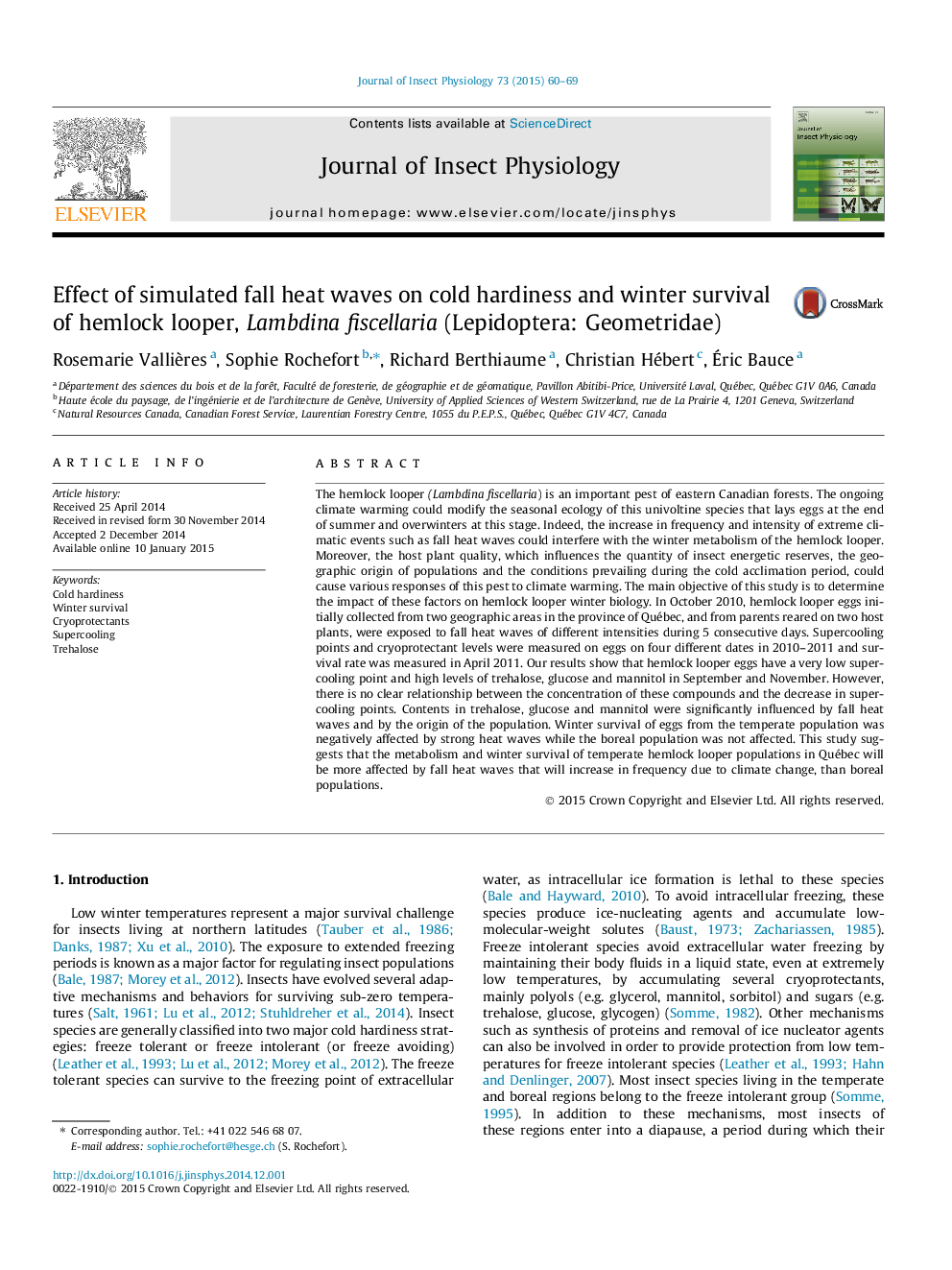| کد مقاله | کد نشریه | سال انتشار | مقاله انگلیسی | نسخه تمام متن |
|---|---|---|---|---|
| 2840426 | 1570997 | 2015 | 10 صفحه PDF | دانلود رایگان |

• We evaluate the effect of fall heat waves on hemlock looper winter survival.
• Host plant and geographic origin of populations can also influence winter survival.
• Heat waves and origin of hemlock looper influence contents of cryoprotectants.
• Only the temperate population was negatively affected by strong heat waves.
The hemlock looper (Lambdina fiscellaria) is an important pest of eastern Canadian forests. The ongoing climate warming could modify the seasonal ecology of this univoltine species that lays eggs at the end of summer and overwinters at this stage. Indeed, the increase in frequency and intensity of extreme climatic events such as fall heat waves could interfere with the winter metabolism of the hemlock looper. Moreover, the host plant quality, which influences the quantity of insect energetic reserves, the geographic origin of populations and the conditions prevailing during the cold acclimation period, could cause various responses of this pest to climate warming. The main objective of this study is to determine the impact of these factors on hemlock looper winter biology. In October 2010, hemlock looper eggs initially collected from two geographic areas in the province of Québec, and from parents reared on two host plants, were exposed to fall heat waves of different intensities during 5 consecutive days. Supercooling points and cryoprotectant levels were measured on eggs on four different dates in 2010–2011 and survival rate was measured in April 2011. Our results show that hemlock looper eggs have a very low supercooling point and high levels of trehalose, glucose and mannitol in September and November. However, there is no clear relationship between the concentration of these compounds and the decrease in supercooling points. Contents in trehalose, glucose and mannitol were significantly influenced by fall heat waves and by the origin of the population. Winter survival of eggs from the temperate population was negatively affected by strong heat waves while the boreal population was not affected. This study suggests that the metabolism and winter survival of temperate hemlock looper populations in Québec will be more affected by fall heat waves that will increase in frequency due to climate change, than boreal populations.
Figure optionsDownload as PowerPoint slide
Journal: Journal of Insect Physiology - Volume 73, February 2015, Pages 60–69